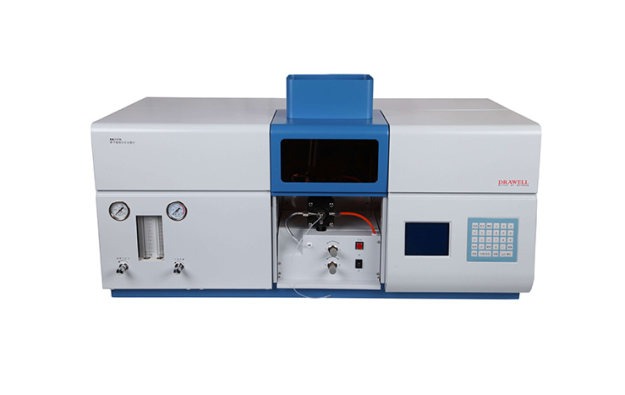Atomic absorption spectrophotometry (AAS) is an analytical technique used for qualitative and quantitative elemental analysis. It relies on the absorption of optical radiation (light) to measure the concentration of gas-phase atomic absorption. When combined with a sample introduction technique such as graphite furnace atomic absorption spectrometry, it can also be used to determine the concentration of trace metals.
Atomic absorption spectrophotometry works by vaporizing and breaking down the sample into free atoms. A light source emits light of a specific wavelength that is absorbed by the free metallic atoms in the sample. The amount of absorption is proportional to the atomic concentration and is measured by a detector. Commonly, a atomic absorption spectrophotometer is used to perform AAS.
Applications of Atomic Absorption Spectrophotometry
Due to its high sensitivity, selectivity, and simple operation, AAS has become a standard technique for trace metal analysis across various fields:
| Field | Applications |
|---|
| Environmental monitoring | Analysis of metals in water, soil, and air samples |
| Food safety | Testing of nutrients and contaminants in food and beverages |
| Clinical chemistry | Determination of essential and toxic elements in blood and urine |
| Forensic science | Analysis of gunshot residue, toxic metals in autopsy samples |
| Petroleum chemistry | Monitoring of catalysts and additives in petroleum products |
Principle of Atomic Absorption Spectrophotometry
The basic components of aninclude a light source, a sample holder, and a detector. As shown in the video below, it works according to the following principles:

- A hollow cathode lamp acts as a line source of optical radiation for the analyte element.
- The liquid sample is fed into a flame or electrothermal atomizer to dissociate into free atoms.
- The free atoms absorb the radiation of the same wavelength emitted by the lamp.
- The amount of absorption is measured by the detector and corresponds to the analyte concentration.
Atomic absorption spectrophotometry is a versatile and robust technique for quantitative elemental analysis. With high sensitivity and selectivity for many elements, it has found widespread applications across various fields. Modern AAS instruments also allow for automated operation and analysis of multiple elements simultaneously. Overall, AAS plays a vital role in scientific research and industry quality control by enabling accurate trace metal analysis.